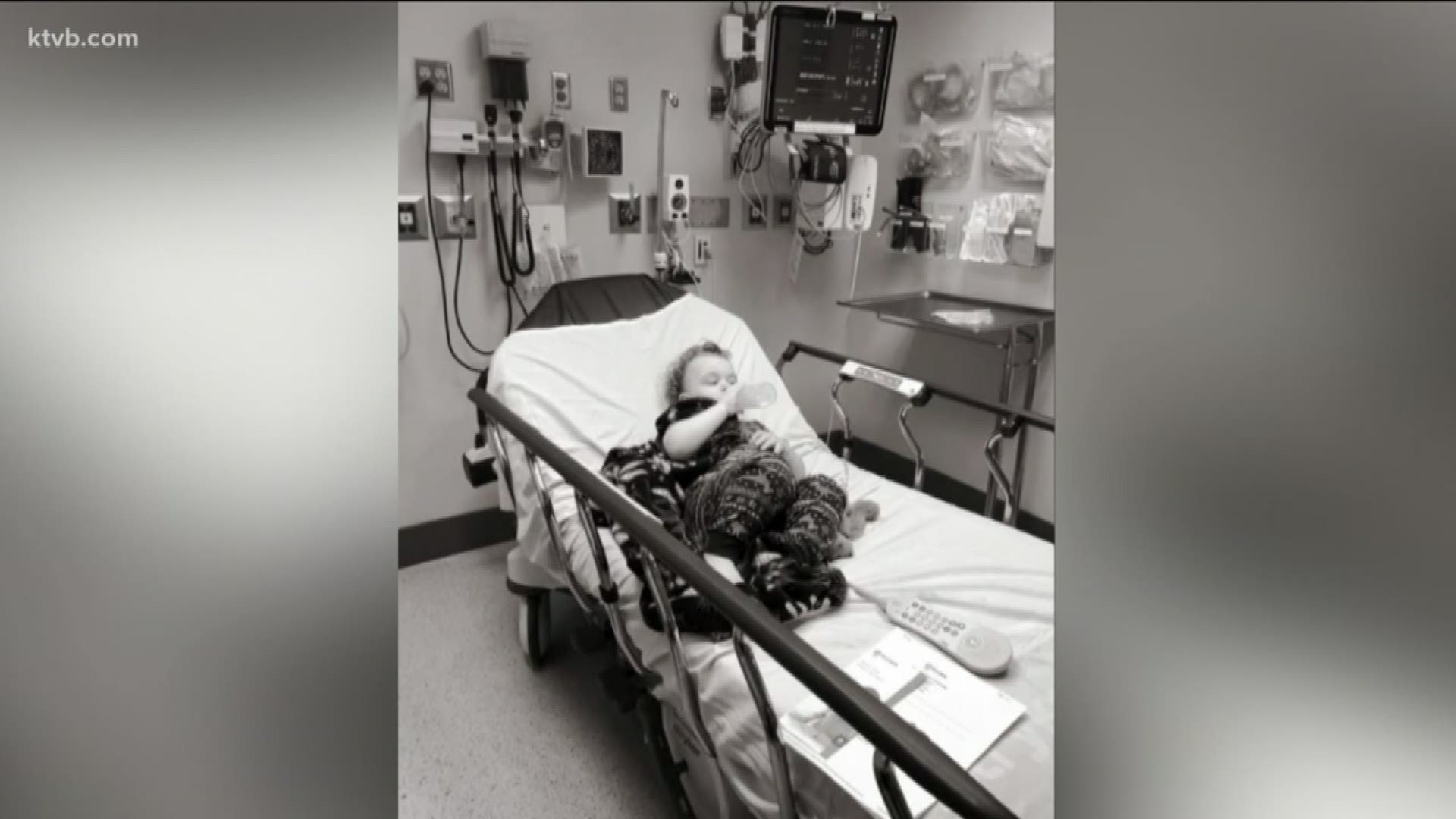BOISE, Idaho — KTVB’s Maggie O'Mara had perhaps the worst moment any parent can go through Thursday.
Her two-year-old son had a high fever and then a sudden seizure.
Thanks to an Ada County dispatcher who walked Maggie through every step to help her boy, the Eagle Fire Department and Ada County paramedics and St. Luke's, Big Mac, as she lovingly calls him, is doing well today.
Maggie shared details of what happened on her Facebook page and received hundreds of comments from other moms who went through the same thing with their children.
Mac had what is called a febrile seizure.
After this incident happened, we wanted to know what is a febrile seizure? How can a parent or caregiver prevent it? And what to do in the moment it happens.
We went to the Mayo Clinic’s website to get some answers. Here’s what we learned.
A febrile seizure is a convulsion in a child caused by a spike in body temperature, often from an infection. They occur in young children with normal development without a history of neurological symptoms. Fortunately, they're usually harmless and typically don't indicate a serious health problem.
Keep your child safe during a febrile seizure and offer comfort afterward. Check with your doctor as soon as possible after a febrile seizure to get your child evaluated.
Symptoms
Usually, a child having a febrile seizure shakes all over and loses consciousness. Sometimes, the child may get very stiff or twitch in just one area of the body.
A child having a febrile seizure may:
- Have a fever higher than 100.4 F (38.0 C)
- Lose consciousness
- Shake or jerk arms and legs
Febrile seizures are classified as simple or complex:
- Simple febrile seizures. This most common type lasts from a few seconds to 15 minutes. Simple febrile seizures do not recur within a 24-hour period and are not specific to one part of the body.
- Complex febrile seizures. This type lasts longer than 15 minutes, occurs more than once within 24 hours or is confined to one side of your child's body.
Febrile seizures most often occur within 24 hours of the onset of a fever and can be the first sign that a child is ill.
Treatment
Most febrile seizures stop on their own within a couple of minutes. If your child has a febrile seizure, stay calm and follow these steps:
- Place your child on his or her side on a surface where he or she won't fall.
- Start timing the seizure.
- Stay close to watch and comfort your child.
- Remove hard or sharp objects near your child.
- Loosen tight or restrictive clothing.
- Don't restrain your child or interfere with your child's movements.
- Don't put anything in your child's mouth.
Call for emergency medical attention.
St. Luke's pediatrician Dr. Mark Uranga was on the News at Four Friday to discuss questions parents might have about febrile seizures. Watch the video with this story to see that interview.



